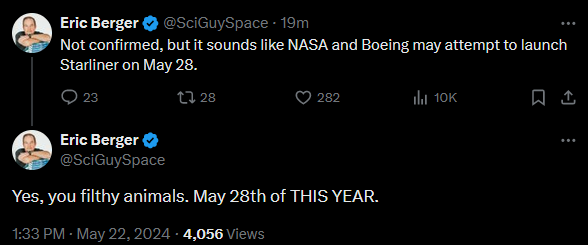I love procrastinating on processing my images! I got set up early at a dark site last month and decided to shoot the sun while it was still up. There were a shitload of sunspots, including AR3697 in the bottom right. This sunspot group was the one that gave us the wonderful aurora back in May (back when it was known as AR3664)
Places where I host my other images:
-
TPO 6" F/4 Imaging Newtonian
-
Orion Sirius EQ-G
-
ZWO ASI1600MM-Pro
-
Skywatcher Quattro Coma Corrector
-
ZWO EFW 8x1.25"/31mm
-
Astronomik LRGB+CLS Filters- 31mm
-
Moonlite Autofocuser
-
Astrozap BAADER AstroSolar Density 5 filter
Acquisition:
- Green filter - 5000 frames at gain 139 and 0.324ms exposure
Capture Software:
- Captured using sharpcap
Processing:
-
Stacked the best 25% of frames in Autostakkert, 2X resample and autosharpened
-
Colorized using curves in Photoshop
-
More lightness/Hue Adjustments
-
Astrosurface wavelets to remove some grid artifacts from stacking
def going to be using this for any of my future planetary projects. Shoutout to Tom on the discord!
-
STF applied in pixinsight
-
Annotatation







I love procrastinating on processing my images! I got set up early at a dark site last month and decided to shoot the sun while it was still up. There were a shitload of sunspots, including AR3697 in the bottom right. This sunspot group was the one that gave us the wonderful aurora back in May (back when it was known as AR3664)
Places where I host my other images:
Flickr | Instagram
Equipment:
TPO 6" F/4 Imaging Newtonian
Orion Sirius EQ-G
ZWO ASI1600MM-Pro
Skywatcher Quattro Coma Corrector
ZWO EFW 8x1.25"/31mm
Astronomik LRGB+CLS Filters- 31mm
Moonlite Autofocuser
Astrozap BAADER AstroSolar Density 5 filter
Acquisition:
Capture Software:
Processing:
Stacked the best 25% of frames in Autostakkert, 2X resample and autosharpened
Colorized using curves in Photoshop
More lightness/Hue Adjustments
Astrosurface wavelets to remove some grid artifacts from stacking
STF applied in pixinsight
Annotatation